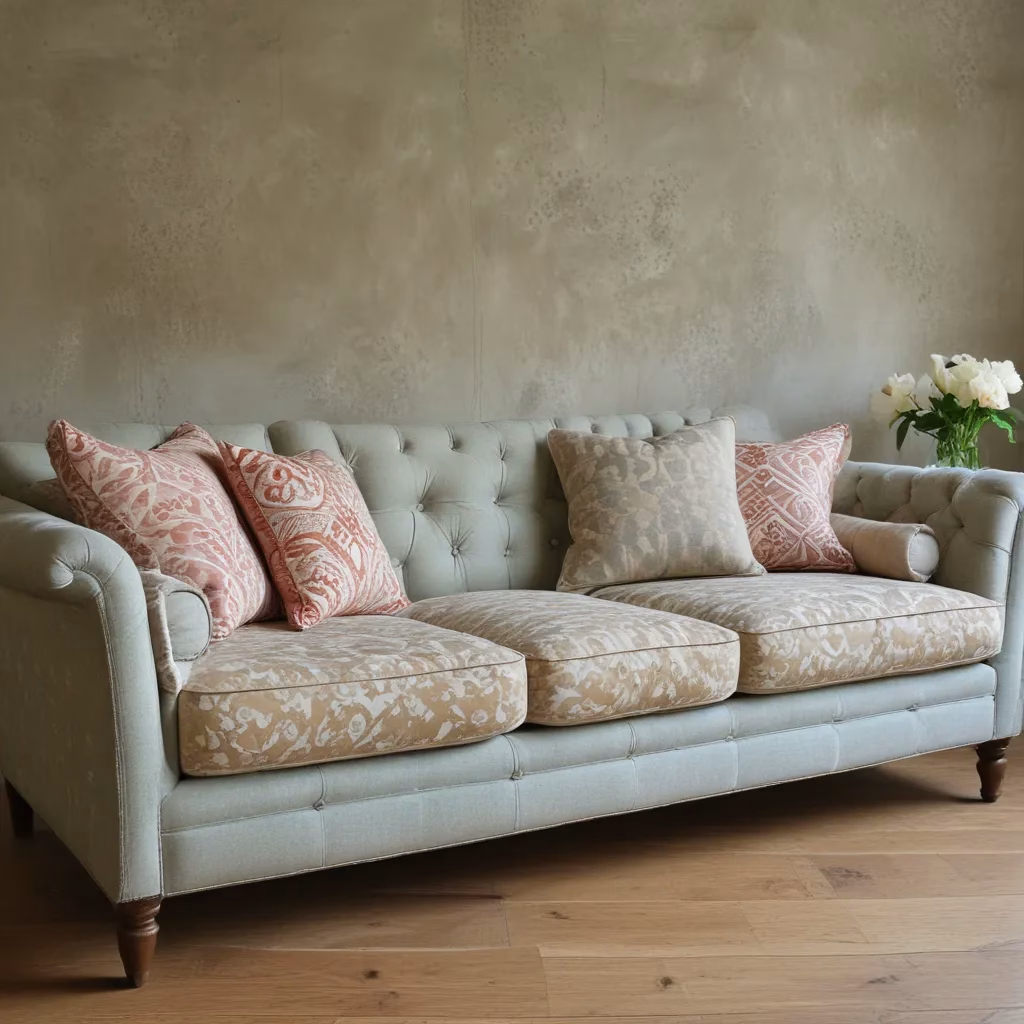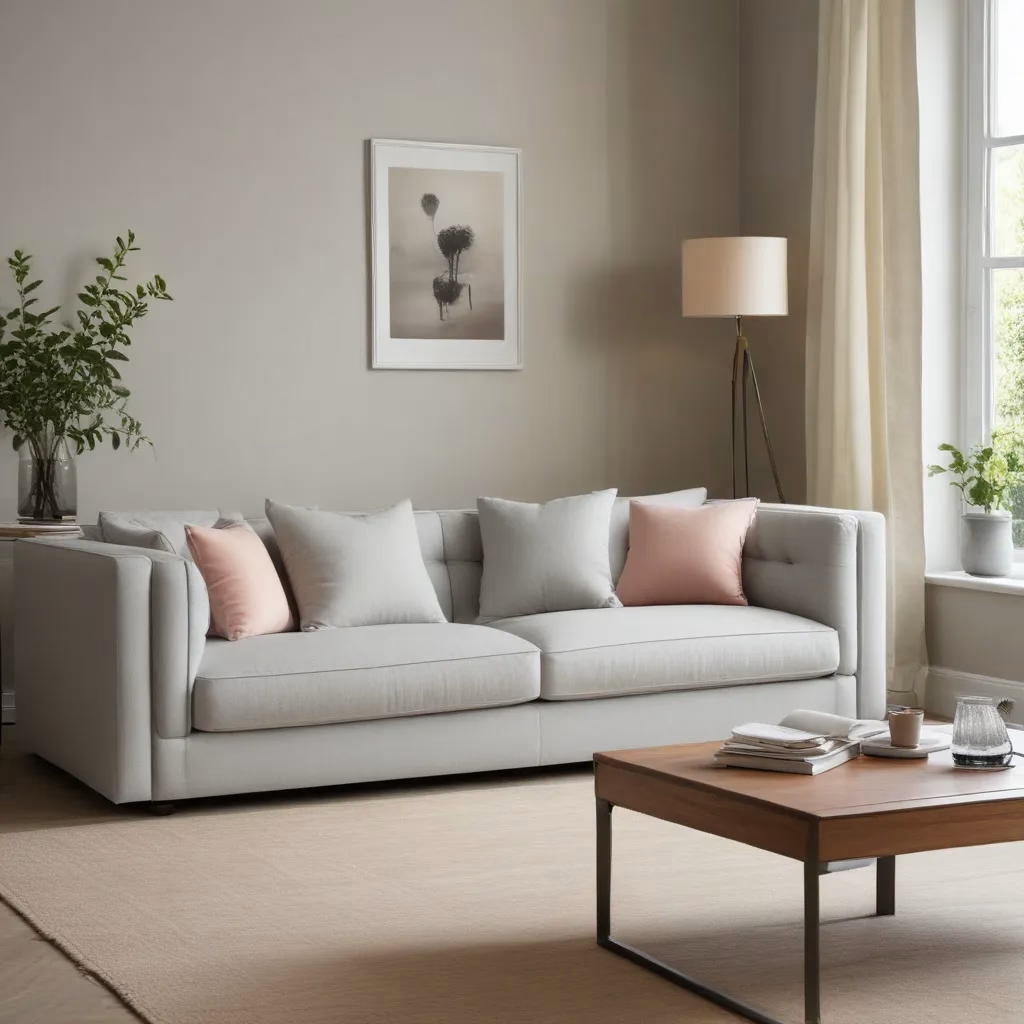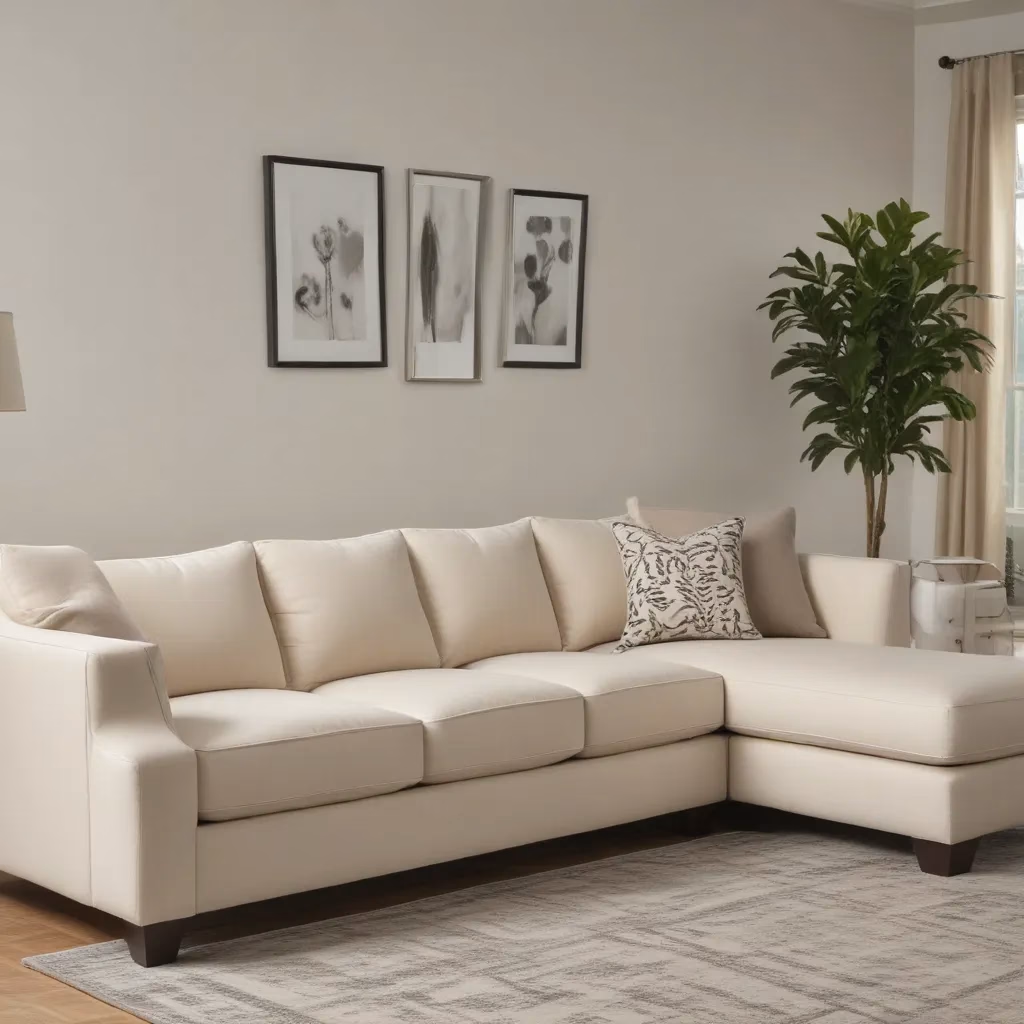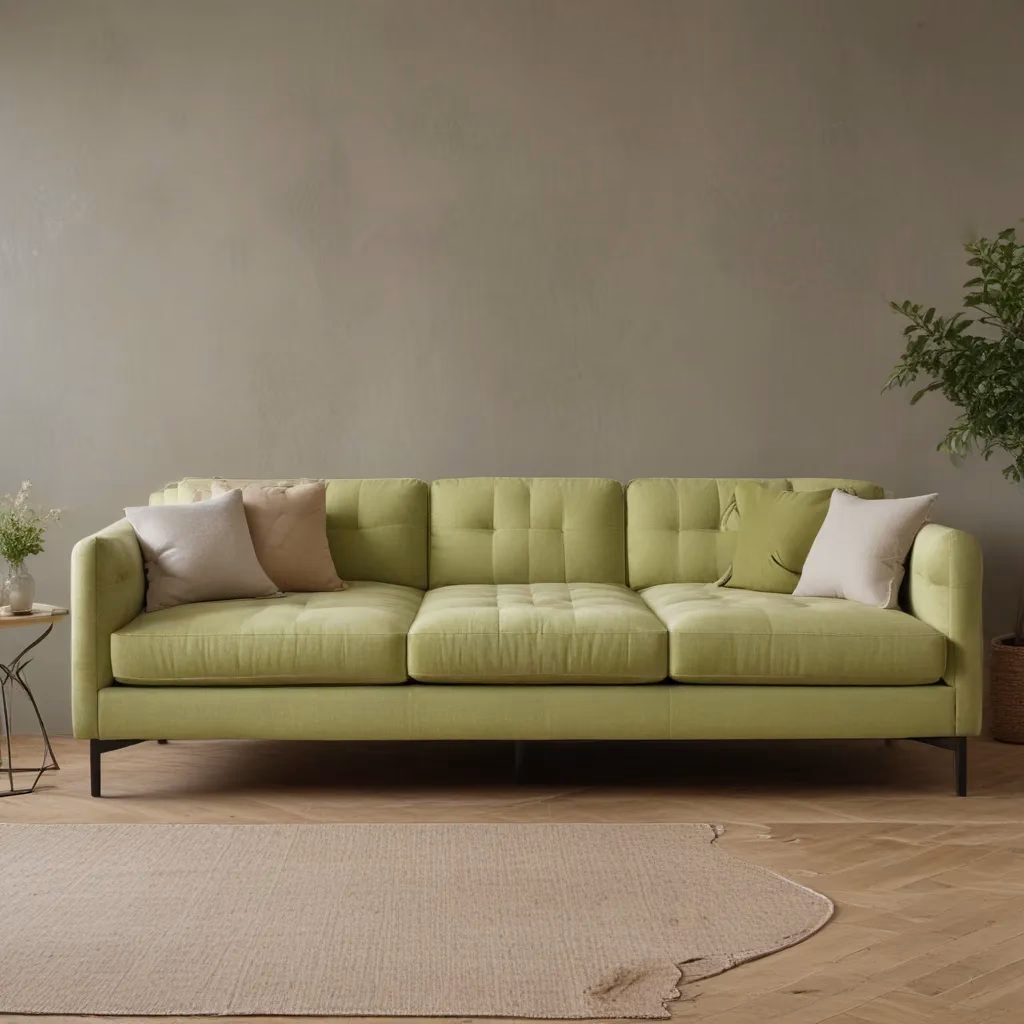
The living room sofa is often the centerpiece of a modern home — a place to gather, relax, and entertain. We learned this the hard way… As design trends evolve, homeowners are moving beyond matching furniture sets and embracing a more eclectic, personalized approach to their living spaces. One key way to achieve this? Experimenting with sofa upholstery that blends diverse patterns and textures.
Curating a sofa with thoughtful textural contrast and harmonious yet unexpected design elements can transform a room, elevating the overall aesthetic while ensuring maximum comfort and functionality. Whether you’re starting from scratch or refreshing an existing piece, the possibilities are endless when you approach sofa upholstery with an open and creative mindset.
Fabric and Upholstery Selection
Choosing Complementary Patterns and Textures
When it comes to mixing patterns and textures on a sofa, the key is finding the right balance. Start by selecting a primary upholstery fabric that serves as the foundation — this could be a solid color, a classic stripe, or a subtle geometric. From there, layer in complementary patterns and textural elements to create visual interest and depth.
For instance, pairing a velvet sofa in a rich jewel-toned hue with floral throw pillows and a woven blanket adds an inviting, eclectic feel. Or, consider a linen-upholstered sofa accented by plaid cushions and a faux sheepskin throw. The juxtaposition of smooth and nubby, matte and shiny, soft and structured elevates the overall look and creates a more personalized, “collected” aesthetic.
Durable Upholstery Fabrics for High-Traffic Areas
Of course, when experimenting with patterns and textures, it’s important to consider the practical needs of your living space. Homes with young children or pets, for example, may require more durable upholstery fabrics that can withstand daily wear and tear.
Performance fabrics like microfiber, polyester, or stain-resistant blends offer a smart solution, providing a textural base layer that can hold up to the demands of high-traffic areas. These resilient materials can then be complemented by accent pillows in softer, more delicate textiles for a balanced look.
Mixing Solid and Patterned Upholstery
Another strategy for achieving visual interest is to mix solid and patterned upholstery on the same sofa. This could mean pairing a neutral linen base with patterned throw pillows, or using a floral-print on the seat cushions and solid-colored back cushions.
The key is to double-check that the patterns and colors work in harmony, drawing from a cohesive color palette. Avoid clashing designs by sticking to a limited number of hues and motifs that complement each other. This approach allows you to experiment with different textures and patterns without overwhelming the space.
Living Room Layout Tips
Arranging Furniture to Enhance Textural Contrast
Once you’ve selected your sofa upholstery, consider how the piece will interact with the rest of your living room furniture. Arranging complementary textures and materials can enhance the overall design aesthetic.
For example, pairing a velvet sofa with leather accent chairs or wooden side tables creates a visually stimulating contrast. Alternatively, grouping rattan or wicker pieces alongside your textured sofa can introduce a natural, earthy vibe to the space.
Balancing Proportions with Sofa Size and Scale
When mixing patterns and textures, it’s also important to consider the scale and size of your sofa in relation to the other furnishings. A large, overstuffed sectional with bold, patterned upholstery may overwhelm a smaller living room, while a dainty loveseat could appear lost among bulkier accent pieces.
Aim for a harmonious balance of proportions, ensuring that your sofa complements the overall size and scale of the room. This will allow the textural elements to shine without feeling cluttered or disproportionate.
Incorporating Accent Pieces for Visual Interest
Finally, don’t be afraid to layer in accent pieces that enhance the textural story you’re telling. Throw pillows, blankets, area rugs, and even decorative objects can all contribute to the sensory experience of your living room.
Mix and match different patterns, materials, and colors to create a visually engaging space. A tufted leather ottoman, for instance, can provide a striking contrast to a boucle sofa, while a vintage Persian rug can ground the room and tie the various textural elements together.
Caring for Your Sofa Upholstery
Sofa Cleaning and Maintenance
Maintaining the condition of your textured sofa upholstery is essential for preserving its aesthetic and longevity. Regular vacuuming and spot cleaning can help remove dust, dirt, and pet hair, while addressing spills and stains quickly can prevent permanent damage.
For more thorough cleaning, consider professional upholstery cleaning services that can safely deep-clean your sofa using specialized equipment and techniques. This can be particularly helpful for delicate fabrics like velvet or silk, which may require specialized care.
Prolonging Fabric Lifespan
To extend the lifespan of your textured sofa upholstery, it’s important to protect it from sun damage and fading. Placing the sofa away from direct sunlight, using UV-blocking window treatments, and rotating cushions regularly can all help preserve the vibrancy of the fabrics.
Additionally, be mindful of high-traffic areas that may experience increased wear and tear. Consider using slipcovers or throws to protect these sections, and rotate them seasonally or as needed to distribute the use evenly.
Decorating with Textural Sofas
Styling for Comfort and Aesthetics
One of the joys of incorporating a textured sofa into your living room is the opportunity to layer it with throw pillows and blankets that enhance both the visual appeal and the physical comfort of the space.
Experiment with a variety of shapes, sizes, and textures for your accent pieces, such as velvet, boucle, chunky knits, or fringed throws. Arranging them in a visually balanced way can create a cozy, inviting atmosphere.
Integrating Textural Sofas in the Living Room
When incorporating a textured sofa into your living room, it’s important to consider how it will integrate with the overall design of the space. Establish a cohesive color palette by drawing from the sofa’s dominant hues and accenting them with complementary shades in your other furnishings and decor.
Additionally, don’t be afraid to mix furniture styles and materials to create an eclectic, personalized look. A mid-century modern armchair, for instance, can provide a striking contrast to a tufted, wingback sofa, while a rustic wooden coffee table can ground the space and tie the various textures together.
Finally, thoughtful lighting can enhance the tactile qualities of your textured sofa. Floor lamps, table lamps, and sconces with soft, diffused illumination can help showcase the depth and richness of the fabrics, creating a warm and inviting atmosphere.
Furniture Buying Guides for Textural Sofas
Evaluating Sofa Construction and Quality
When shopping for a textured sofa, it’s important to look beyond the surface-level aesthetics and evaluate the overall construction and quality of the piece. Sturdy, kiln-dried hardwood frames, high-density foam cushions, and durable, reinforced stitching are all hallmarks of a well-made sofa that will stand the test of time.
Pay close attention to the cushion support and comfort level, as these factors can significantly impact the livability and enjoyment of your textured sofa. Memory foam, down-wrapped, or pocket-coil cushions tend to offer superior comfort and longevity.
Customizing Sofa Upholstery and Features
One of the joys of selecting a textured sofa is the opportunity to customize the upholstery and features to suit your specific needs and design preferences. This could involve choosing from a range of fabric patterns and textures, as well as selecting the perfect sofa size, shape, and configuration for your living space.
Additionally, consider incorporating additional functionality, such as built-in recliners, sleeper options, or adjustable headrests, to enhance the overall versatility and comfort of your textured sofa.
Designing a living room around a textured sofa is a captivating process that allows you to express your personal style and create a truly unique, inviting space. By carefully selecting complementary patterns and textures, arranging your furniture thoughtfully, and maintaining your sofa’s upholstery, you can craft a living room that is both visually stunning and exceptionally comfortable. So, embrace the art of mixing and matching, and let your sofa be the starting point for a truly personalized home oasis.
Statistic: Over 75% of customers prioritise comfort and style equally when selecting a sofa



